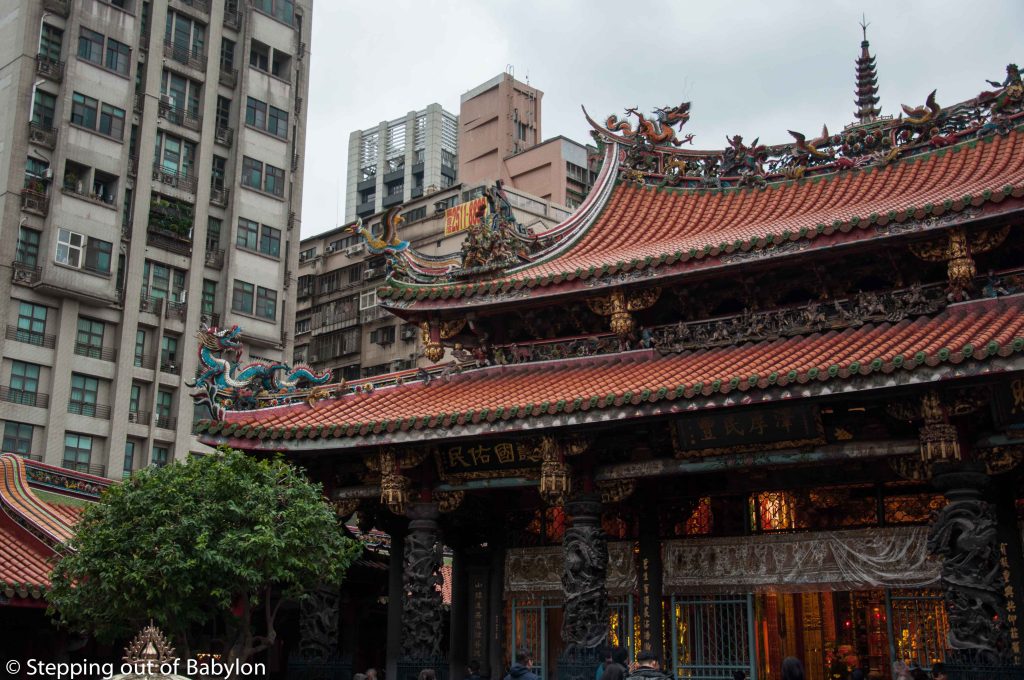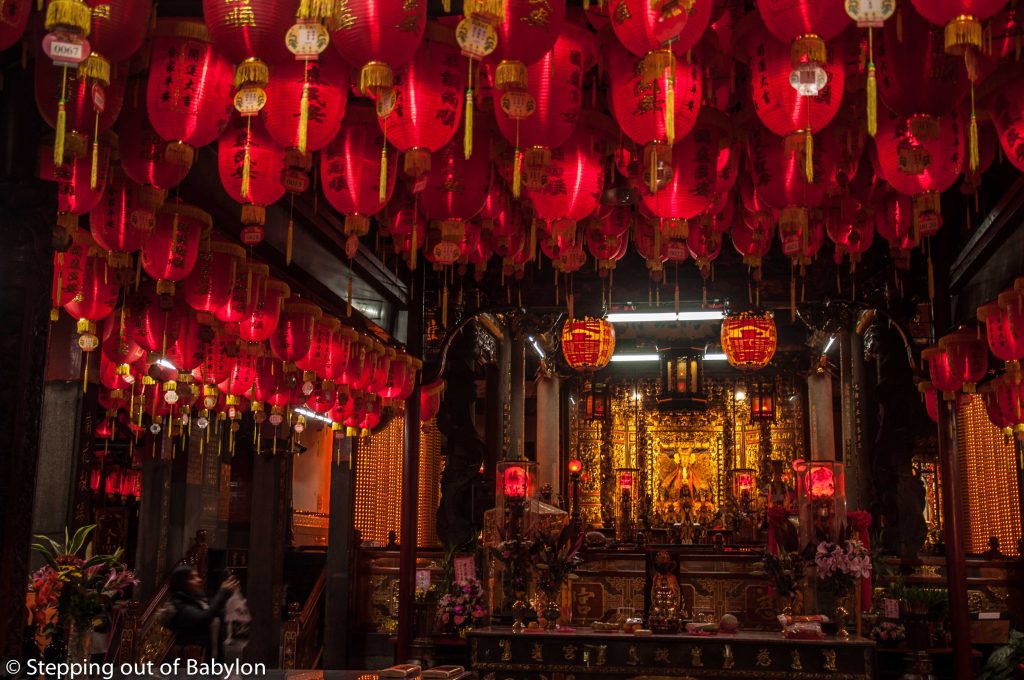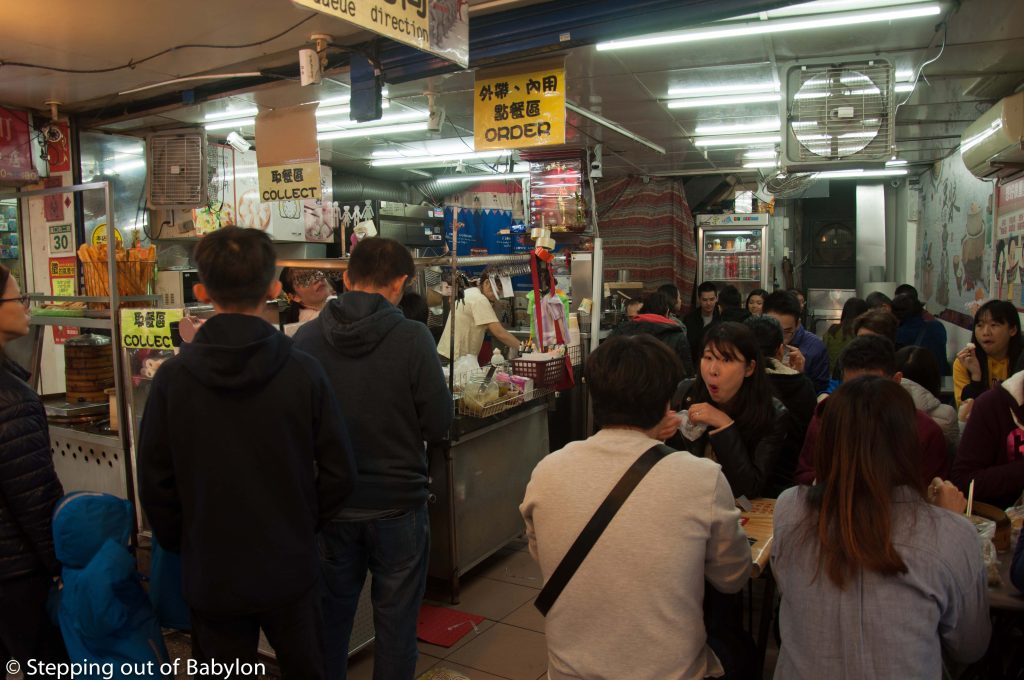
Arriving in Taipei
Arriving in Taipei after six weeks in Japan, I had the unexpected feeling that I had finally arrived in Asia: scooters everywhere, food being cooked and sold on the streets, foot massages being announced as we passed by, the ladyboys… the smells, the sounds, the turmoil that more or less characterise Southeast Asian countries — but without the chaotic traffic, the annoying horns, or the tuk-tuk cliché!
However, Taipei greeted me with a grey, cloudy sky that soon turned into a light but persistent rain, which lasted throughout my stay, making walks around the city — especially those further from the central area — less enjoyable.
Even the markets seemed to lose their usual color. The exotic nature of some foods and products wasn’t enough to leave a vivid memory. The winter weather, which made long walks unpleasant, pushed me instead into indoor spaces like coffee shops and malls, where you can feel a modern, cosmopolitan Taiwan, heavily influenced by Western habits and standards.
The cold and rainy climate painted the city in shades of grey, leaving a somewhat underwhelming impression of the capital, where there seems to be a disconnection between the run-down concrete buildings from the 1960s and the massive modern office towers and luxury apartments competing with the tallest in the world (Taipei 101, the city’s icon, is ranked 5th). Somewhere in between is an effort to rehabilitate old industrial zones from the 1930s and 1940s, where characteristic brick buildings were transformed into shops, studios, and ateliers — part of an attempt to create heritage and a sense of the past in a relatively new country with little history.
Despite being a recent city (it only became the capital in 1949) with little tradition or historical depth, Taipei still manages to offer some charm. Chinese goods stores selling decorations, food, and traditional medicinal products that give the city a colourful and exotic touch dominate the older neighbourhoods.

A bit about Taiwan… aka R.O.C.
Taiwan, officially called the Republic of China or R.O.C. (not to be confused with the People’s Republic of China — commonly just called China), is a relatively new country compared to its neighbours. It became an independent territory when Japanese troops withdrew from the island at the end of World War II in 1945. Despite their relatively short occupation (less than five decades), Japan contributed significantly to Taiwan’s economic and industrial development.
Originally called Formosa by the Portuguese when they arrived in the 16th century, Taiwan was under Chinese rule for centuries. This is reflected in its population, which is almost entirely ethnic Chinese, with indigenous groups and other minorities making up less than 5%Despite its economic development — Taiwan ranks among the world’s developed countries — it remains unrecognized as an independent nation by most of the international community. It is the most populous country and the largest economy that is not a member of the UN. This is due to Chinese foreign policy, which threatens to cut off trade and diplomatic relations with countries that recognize Taiwan. As a result, only 14 nations and the Holy See officially acknowledge it.
Regardless China’s efforts to maintain dominance over Taiwan, a growing number of young Taiwanese are distancing themselves from Chinese influence, instead embracing their own identity — a unique blend of Chinese and Japanese cultural elements.

A Temple Visit to Remember
Maybe it was the rainy, grey weather, or maybe it was the city itself, but Taipei didn’t leave a particularly strong or memorable impression on me — with one exception: my visit to Longshan Temple, one of the oldest Buddhist temples in Taipei. Built in traditional Chinese religious style, it has a long history marked by fires, earthquakes, wars, and numerous reconstructions.
I arrived at the temple late in the day. The sky had been thick with clouds, and the early darkness added to the mood. Despite the dim light, I could still see the intricate carvings of dragons and other mythological figures, decorated with floral motifs and enhanced by the vivid colors of the carefully maintained paintwork.
It was clearly a special day, as it’s not every day that so many people gather at the temple, singing or chanting prayers alongside the monks inside. The smoke from the incense filled the room, blending with the scent of flowers and food offerings. The result was a unique and vibrant atmosphere — a moment of magic that made my visit to Longshan Temple truly memorable.
The square in front of the temple is also an interesting spot, serving as a meeting place for the Chinese community. Many elderly people gather there to play chess or cards. It’s also a place where beggars and homeless people congregate, creating a stark contrast to the sleek modern image of Taipei, symbolized by the gleaming Taipei 101 tower.


Where to sleep in Taipei:
As the main entry point to Taiwan, Taipei offers plenty of accommodation options for all budgets — including lots of hostels with dorm beds.
The Pillow Hostel
A great location, about 400m from MRT Taipei Station (exit Z6), which connects to several metro lines. It’s a quiet and comfortable place with very friendly and helpful staff. There’s a well-equipped kitchen available for guests, and free coffee in the morning (surprisingly good!), which might make up for the not-so-cozy common area. Good Wi-Fi too.
The area around the hostel is full of restaurants and street food stalls, and it’s within walking distance of the Ximending shopping district (also known as Shi-men Ting), which really comes alive in the evenings with shops and food stands staying open late.
Duckstay Hostel
On my second visit to Taipei, I stayed at Duckstay Hostel, near Longshan Temple. The hostel was probably better for meeting other travelers, but it wasn’t very comfortable — and the location was less convenient.
The best Taiwanese breakfast in Taipei:
Yong He Soy Milk – Wanhua District (Hankou Street)
This place is a local institution when it comes to traditional Taiwanese breakfast! It opens around 5 a.m. and stays open until 3 p.m., but no matter when you go, there’s almost always a line. The service is quick and efficient — though a bit rough — and the place is noisy, not very clean, and far from comfortable. Still, it’s a great chance to experience local life and eat with the locals.
Yong He Soy Milk – Zhongzheng District (Hengyang Road)
If the Wanhua location is too crowded, there’s another spot with the same name on Hengyang Road. It serves the same kind of food in a quieter environment — but it’s poorly ventilated, with dirty white walls and aluminum tables. The flickering fluorescent lights give the place a slightly depressing vibe. Personally, I prefer ordering the food to go — as most locals do — and eating it back at the hostel, where there’s usually a common area set up for this.


